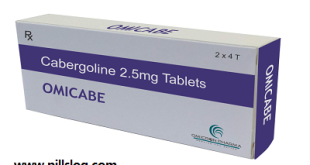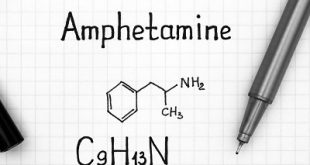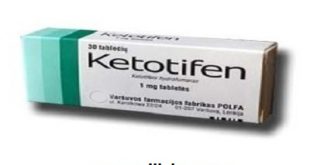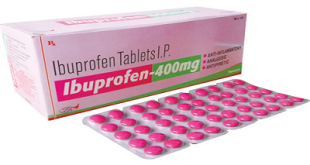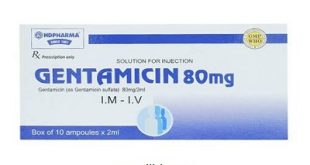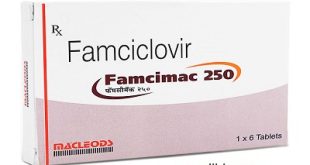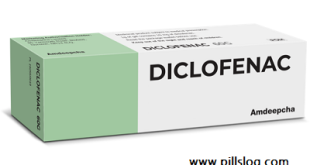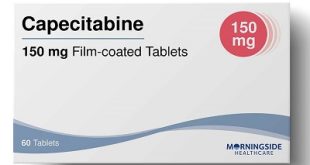What is Cabergoline? Cabergoline, an ergot derivative, is a long-acting dopamine agonist and prolactin inhibitor. It is used to treat hyperprolactinemic disorders and Parkinsonian Syndrome. Cabergoline possesses potent agonist activity on dopamine D2 receptors. Properties and Characteristics of Cabergoline Drug class Ergot derivative and prolactine inhibitors Brand Names Dostinex, Cabaser, Cabaseril, Cabergolinum [Latin], Cabergolina [Spanish], Cabergolinum, Cabergolina, Galastop Synonyms Cabergolina, …
Read More »Amphetamine – Uses and Dose
Background Amphetamine, a compound discovered over 100 years ago, is one of the more restricted controlled drugs. It was previously used for a large variety of conditions and this changed until this point where its use is highly restricted. Amphetamine, with the chemical formula alpha-methylphenethylamine, was discovered in 1910 and first synthesized by 1927. After being proven to reduce drug-induced …
Read More »Ketotifen – Uses
Background Ketotifen is a benzocycloheptathiophene derivative with potent antihistaminic and mast cell stabilizing properties. It has a similar structure to some other first-generation antihistamines such as cyproheptadine and azatadine. Ketotifen was first developed in Switzerland in 1970 by Sandoz Pharmaceuticals and was initially marketed for the treatment of anaphylaxis. In the US, it is now used in an over-the-counter ophthalmic …
Read More »Ibuprofen – Side Effects
Background Ibuprofen is a non-steroidal anti-inflammatory drug (NSAID) derived from propionic acid and it is considered the first of the propionics. The formula of ibuprofen is 2-(4-isobutylphenyl) propionic acid and its initial development was in 1960 while researching for a safer alternative for aspirin. Ibuprofen was finally patented in 1961 and this drug was first launched against rheumatoid arthritis in …
Read More »Gentamicin – Warnings
Description Gentamicin is an antibacterial prescription medicine approved by the U.S. Food and Drug Administration (FDA) for the treatment of several infections caused by certain types of bacteria, such as meningitis, infection of the blood, and serious urinary tract infections. Gentamicin is a bactericidal aminoglycoside that was discovered and isolated from Micromonospora purpurea in 1963. It is one of the …
Read More »Heparin – Uses
Background Heparin is an anticoagulant indicated for thromboprophylaxis and to treat thrombosis associated with a variety of conditions such as pulmonary embolism and atrial fibrillation. Unfractionated heparin (UH) is a heterogenous preparation of anionic, sulfated glycosaminoglycan polymers with weights ranging from 3000 to 30,000 Da. It is a naturally occurring anticoagulant released from mast cells. It binds reversibly to antithrombin …
Read More »Becaplermin – Uses
Becaplermin Becaplermin belongs to the class of platelet-derived growth factors (PDGFs) used to treat diabetic foot ulcers in people with good blood flow in the legs and feet. A diabetic foot ulcer is a common complication of diabetes. Ulcers are formed due to the breakdown of skin tissue and exposure to underneath layers. Diabetic foot ulcers commonly develop under the …
Read More »Famciclovir – Dosage
What is famciclovir? Famciclovir is an antiviral drug which is active against the Herpes viruses, including herpes simplex 1 and 2 (cold sores and genital herpes) and varicella-zoster (shingles and chickenpox). It belongs to a class of drugs called nucleoside analogs that mimic one of the building blocks of DNA. It stops the spread of herpes virus in the body …
Read More »Diclofenac – Dosage
What is diclofenac? Diclofenac is a phenylacetic acid derivative and non-steroidal anti-inflammatory drug (NSAID). NSAIDs inhibit cyclooxygenase (COX)-1 and-2 which are the enzyme responsible for producing prostaglandins (PGs). PGs contribute to inflammation and pain signalling. Diclofenac, like other NSAIDs, is often used as first line therapy for acute and chronic pain and inflammation from a variety of causes. It was …
Read More »Capecitabine – Dosage
Background Capecitabine is an orally-administered chemotherapeutic agent used in the treatment of metastatic breast and colorectal cancers. It is a prodrug, that is enzymatically converted to fluorouracil (antimetabolite) in the tumor, where it inhibits DNA synthesis and slows growth of tumor tissue. Properties and Characteristics of Capecitabine Drug class Antimetabolites, Antineoplastics, chemotherapeutic agents Brand Names Ecansya, Xeloda Synonyms Capecitabin, Capecitabina, …
Read More » PillsLog.com | Instantly Drugs information Instantly find your pills from our A to Z list Medicines and Prescription Drug information for consumers and medical health professionals.
PillsLog.com | Instantly Drugs information Instantly find your pills from our A to Z list Medicines and Prescription Drug information for consumers and medical health professionals.
